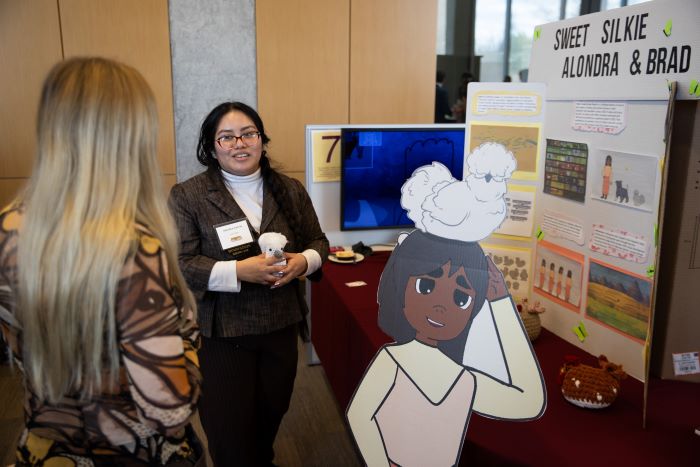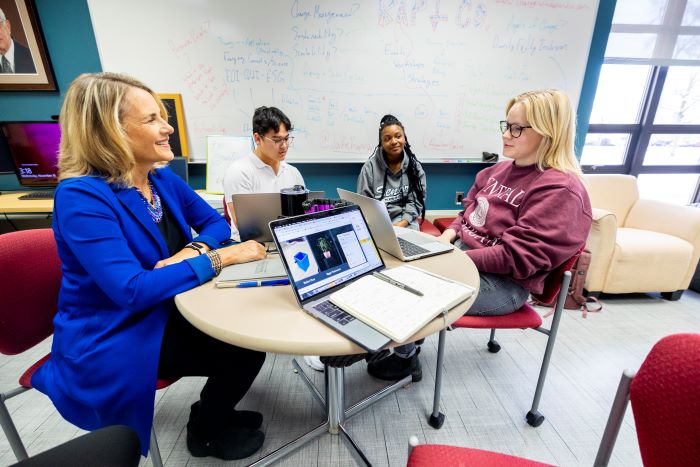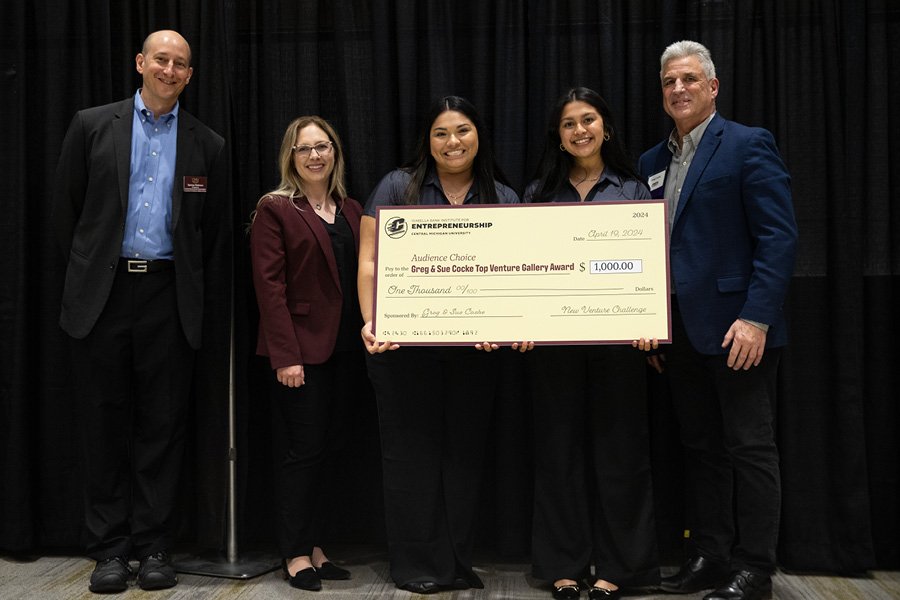
Start up
Passion. Potential. Pitches. Don't miss any of the 2025 New Venture Challenge excitement.
Tune in Friday, April 11 at 1 p.m. for great ideas and fierce competition. Then, join the judges, mentors, spectators and teams as they see who is going home with thousands of dollars in venture financing. The awards broadcast begins at 6:30 p.m. and one team will walk away as the overall best venture.
Central Michigan University’s College of Business Administration is the home of the Isabella Bank Institute for Entrepreneurship and the first Department of Entrepreneurship in the state of Michigan. We are a student-centric hub where experiential, curricular, and external entrepreneurial opportunities intersect.
Our mission is to maximize student success by fostering a campus-wide entrepreneurial mindset that promotes inter-disciplinary collaboration and the creation of new ventures.
We aim to create innovative programming, boost cross-campus and ecosystem collaboration and provide a comprehensive mentoring program.
Our institute provides extracurricular opportunities and is open to all undergraduate and graduate CMU students.
Are you interested in becoming an entrepreneur?
Every journey is unique. Explore the opportunities that interest you.
Experts on Point is a University Communications series focusing on CMU faculty who have special insights into interesting, important and timely topics.

Nobody in Michigan needs to be told that we officially have been in a heatwave. It takes only a couple of consecutive days above 90 degrees to get the label. As of July 9, much of Michigan had seven to 10 days of such hot, dry weather.
While many people can find air-conditioned escape from the heat, our woodland neighbors have had to try to cope. Most have suffered, some have died.
CMU Biology faculty member Thomas Gehring is an expert in the study of mammals, wildlife and landscape ecology. We talked with him about the impact of prolonged periods of heat and drought on Michigan wildlife.
“I think it boils down to climate change, and we will continue to see this issue more often.” — Thomas Gehring, Biology faculty member
A: Prolonged periods of heat and dryness can trigger harmful stress and diseases in Michigan wildlife, such as deer and waterfowl, including common loons. Food sources like acorns and seeds are diminished by these conditions, which leads to increased competition, lower birth rates, starvation and death.
A: With more frequent weather extremes and continued warming, certain species will have increasing difficulty. But there also could be invasive, non-native species, such as nutria, that would prosper under those conditions and extend their range into Michigan, creating more competition for our native species and potentially introducing diseases.
A: Drought and warmer temperatures fuel the expansion of animal diseases such as epizootic hemorrhagic disease, or EHD, which impacts white-tailed deer, and botulism in wild waterfowl. Neither disease has shown an immediate risk to humans at this point, however, pets such as dogs could acquire botulism if they were to eat a diseased dead bird.
A: With climate change, we are going to see the problem of EHD more frequently. It has become a common phenomenon in the Southern states, especially at the end of summer. We've had a couple of stretches in Michigan in the 1960s and '70s, but now in the 2000s we have had more-frequent outbreaks. That and the early arrival of hot, dry conditions make me wonder what has changed. I think it boils down to climate change, and we will continue to see this issue more often.
The question is, do we just accept that, or do we try to address the underlying causes? In the meantime, the public can help in these hotter and drier times by reporting sick or dead wildlife to the Michigan Department of Natural Resources.

Explore special opportunities to learn new skills and travel the world.

Present your venture and win BIG at the New Venture Challenge.

Boost your entrepreneurial skills through our workshops, mentor meetups and pitch competitions.

Learn about the entrepreneurship makerspace on campus in Grawn Hall.

Present a 2-minute pitch at the Make-A-Pitch Competition and you could win prizes and bragging rights!

Connect with mentors and faculty who are here to support the next generation of CMU entrepreneurs.

Are you a CMU alum looking to support CMU student entrepreneurs? Learn how you can support or donate to the Entrepreneurship Institute.